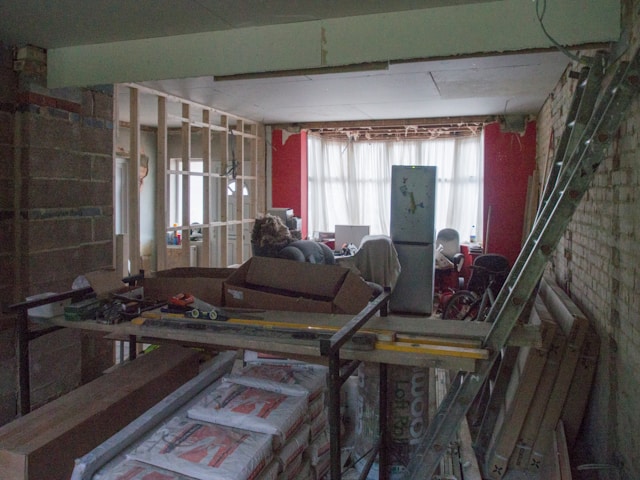Older homes hold a special charm that modern construction often can’t replicate. With their unique architecture, intricate woodwork, and vintage fixtures, they tell stories of a different era. But renovating an older home also comes with challenges from hidden damage to outdated systems that require careful planning and consideration.
Whether you’re updating a 1920s bungalow or restoring an old Victorian, these old home renovation tips will help you preserve the character of your home while making it safe, functional, and comfortable for modern living.
Start with a Thorough Inspection
Before you start tearing down walls or picking out paint colors, get a comprehensive inspection. Older homes can hide serious issues that aren’t always visible at first glance. Hiring a licensed home inspector or a structural engineer is a crucial first step.
Be sure your inspection covers:
-
Foundation cracks or shifting
-
Outdated electrical wiring (such as knob-and-tube systems)
-
Plumbing corrosion or leaks
-
Roof condition and potential water damage
-
Mold, mildew, or pest infestations
-
Hazardous materials like asbestos or lead paint
Knowing what you’re working with upfront will help you budget more accurately and avoid costly surprises later. Renovating an older home without a thorough inspection is like sailing without a map.
Preserve the Character, Update the Essentials
One of the biggest joys of restoring an old home is maintaining the character that makes it unique. Think original hardwood floors, built-in shelving, ornate trim, or vintage windows. Wherever possible, try to preserve these architectural details they’re irreplaceable and add significant value.
That said, some elements simply must be upgraded:
-
Replace old electrical panels and wiring to meet current safety codes
-
Update plumbing systems to avoid leaks and poor water pressure
-
Install modern HVAC for comfort and efficiency
-
Improve insulation to regulate temperature and reduce energy bills
The key is to strike a balance between aesthetics and safety. When done right, you can keep the historic charm while improving the function of your space.
Budget for Hidden Surprises
One of the most important old home renovation tips is to expect the unexpected. Renovating historic homes often comes with surprise expenses hidden rot in the walls, outdated framing, or code violations that need to be fixed.
Plan to build a contingency of at least 15–20% into your budget. If your renovation is estimated to cost $50,000, have at least $7,500–$10,000 extra set aside for unforeseen issues. This buffer helps reduce stress and keeps your project on track when surprises arise.
Check Local Building Codes and Permits
Before swinging a hammer, check with your local building department about what permits are required. In many areas, especially those with historical designations, there are strict regulations about what you can and cannot change.
If you’re renovating historic homes, you may need:
-
Approval for exterior changes (like windows or siding)
-
Special permits for structural work or system upgrades
-
Clearance to remove lead paint or asbestos
Failing to comply with local codes can delay your project, lead to fines, or even force you to undo completed work. Always do your research and plan accordingly.
Be Energy-Efficient — Without Losing Style
Older homes weren’t built with energy efficiency in mind, but that doesn’t mean they can’t be improved. The good news is that modern upgrades can significantly reduce energy usage while still honoring the home’s original look.
Here are a few smart upgrades:
-
Add insulation in attics and crawl spaces
-
Upgrade to double- or triple-pane windows with vintage-style frames
-
Install energy-efficient appliances and LED lighting
-
Seal drafts around doors and windows
-
Consider solar panels or smart thermostats for better control
These upgrades not only make your home more comfortable but also lower your utility bills over time.
Work with Specialists
Not all contractors are experienced in working with older homes. It’s essential to hire professionals who understand the nuances of restoring an old home. A contractor or architect familiar with historical architecture will know how to preserve key features while making the home safer and more livable.
Also, be aware of when to DIY and when to call in experts. For example:
-
DIY: Cosmetic updates, painting, flooring refinishing
-
Hire a pro: Electrical rewiring, structural repairs, asbestos or lead removal
Trying to tackle complex or dangerous tasks on your own can lead to serious risks and costly mistakes.
Plan Room by Room
Renovating an older home can be overwhelming, especially if you’re trying to do everything at once. Instead, take a phased approach by prioritizing the rooms that need the most attention typically kitchens, bathrooms, or any space with structural damage.
Break your project down into manageable phases:
-
Address safety concerns (electrical, plumbing, roof)
-
Renovate essential rooms (bathroom, kitchen, bedrooms)
-
Restore decorative details and aesthetic touches
-
Tackle exterior work and landscaping
This strategy helps you stay organized, reduces disruption to your daily life, and spreads out costs over time.
Final Thoughts
Renovating an older home is more than just a construction project it’s an opportunity to breathe new life into a piece of history. While it comes with challenges, careful planning and the right team can make the process both rewarding and successful.
Remember:
-
Start with a full inspection
-
Prioritize essential upgrades
-
Preserve what makes your home unique
-
Budget for the unexpected
-
Comply with building codes
-
Take a phased approach to avoid burnout
By following these tips for renovating an older home, you’ll not only enhance your property’s value and safety but also create a space that beautifully blends past and present. Whether you’re upgrading an older home for your family or restoring an old home as a passion project, the journey can be as fulfilling as the finished result.

